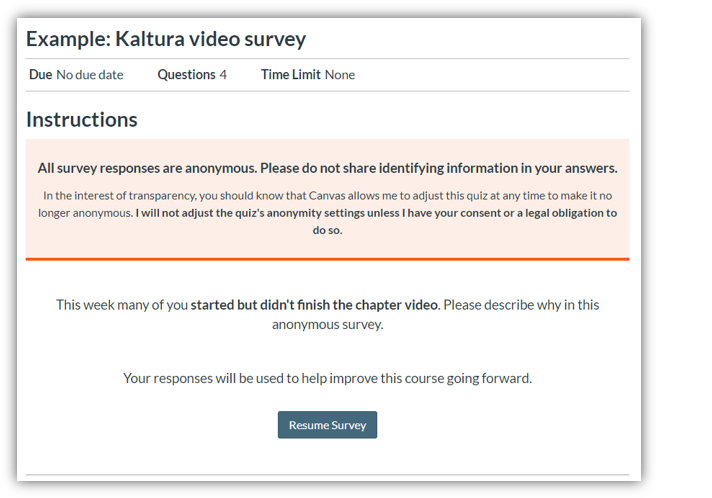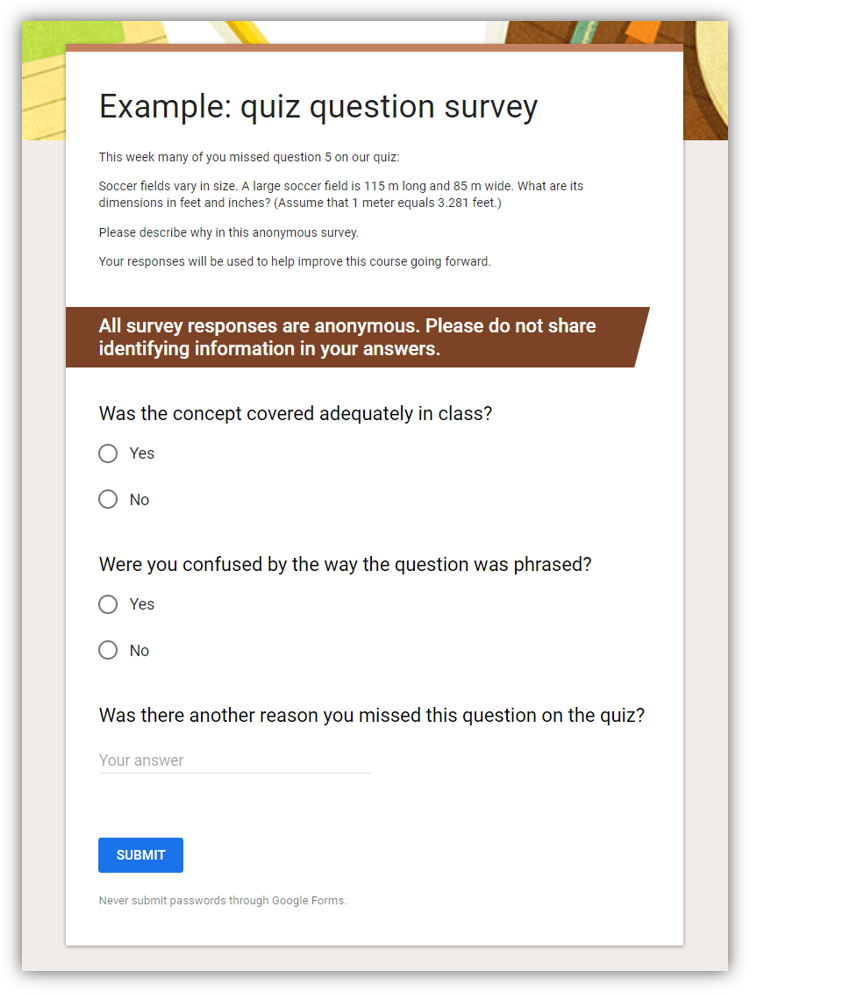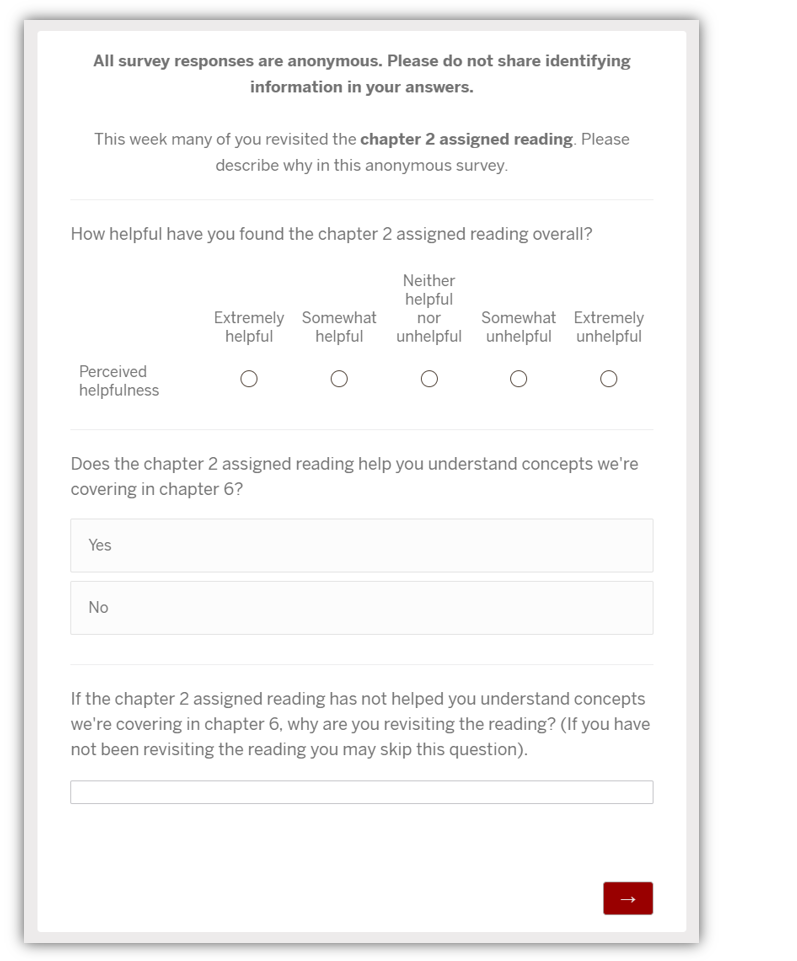2.3. Tools to use
A number of tools are available at IU that may be used to gather anonymous feedback from students, each with different strengths. Review some of the options available to you below.
Canvas Quizzes
| Benefits | Limitations |
|---|---|
| Familiar interface | Anonymity has conditions you'll need to share with your students |
| Can be graded, encouraging engagement | |
| Can be anonymous* |

Canvas Quizzes (or "surveys") are a good option for gathering student feedback using a tool that you and your students may already be familiar with. For help creating a survey in Canvas, see: How do I create a survey in my course?
This quiz is available to be viewed from this Canvas site's Quizzes list.
Top Hat
| Benefits | Limitations |
|---|---|
| Works well in the classroom | Can't be graded |
| Can address responses with students in the moment | |
| Can be anonymous |

Top Hat can be used to gather anonymous feedback from students in the classroom, enabling you to ask follow-up questions in the moment that students are considering the question. For help creating anonymous questions in Top Hat, see: Professor: Anonymous Questions and Top Hat at IU Instructor resources.
Google at IU Forms
| Benefits | Limitations |
|---|---|
| Quick creation | Can't be graded |
| Can be anonymous | Can be challenging to share |

Google Forms offer a quick solution for gathering anonymous feedback from students. While Google Forms can't be graded, they can be made available in Canvas or elsewhere on the web. For help creating a Google Form, see: Google Forms.
This form is also available to be viewed in Google Forms online.
Qualtrics
| Benefits | Limitations |
|---|---|
| Wide variety of question-types | Can't be graded |
| Can be anonymous |

Qualtrics offers numerous question-types for gathering detailed, anonymous feedback from students. While Qualtrics surveys can't be graded, they can be made available in Canvas or elsewhere on the web. For help with Qualtrics, see: About Qualtrics at IU.
This form is also available to be viewed in Qualtrics online.

